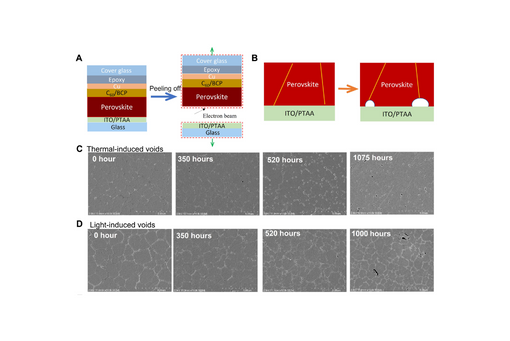Influence of voids on the thermal and light stability of perovskite solar cells
Abstract
The formation of voids in perovskite films close to the buried interface has been reported during film deposition. These voids are thought to limits the efficiency and stability of perovskite solar cells (PSCs). Here, we studied the voids formed during operation in perovskite films that were optimized during the solution deposition process to avoid voids. New voids formed during operation are found to assemble along grain boundaries at the bottom interface, caused by the loss of residual solvent and conversion of amorphous phase to crystalline phase. Unexpectedly, the formation of these voids did not negatively affect the stability of PSCs. Decreasing the amorphous region in perovskites by thermal annealing decreased the positive iodide interstitial density, and improved the light stability of PSCs. The annealed devices maintained 90% of their initial efficiency and light soaking for 1900 hours at open circuit condition under 1-sun illumination at 50°C.
Citation
Wang, M., Fei, C., Uddin, M. A., & Huang, J. (2022). Influence of voids on the thermal and light stability of perovskite solar cells. Science Advances, 8(38). https://doi.org/10.1126/sciadv.abo5977


